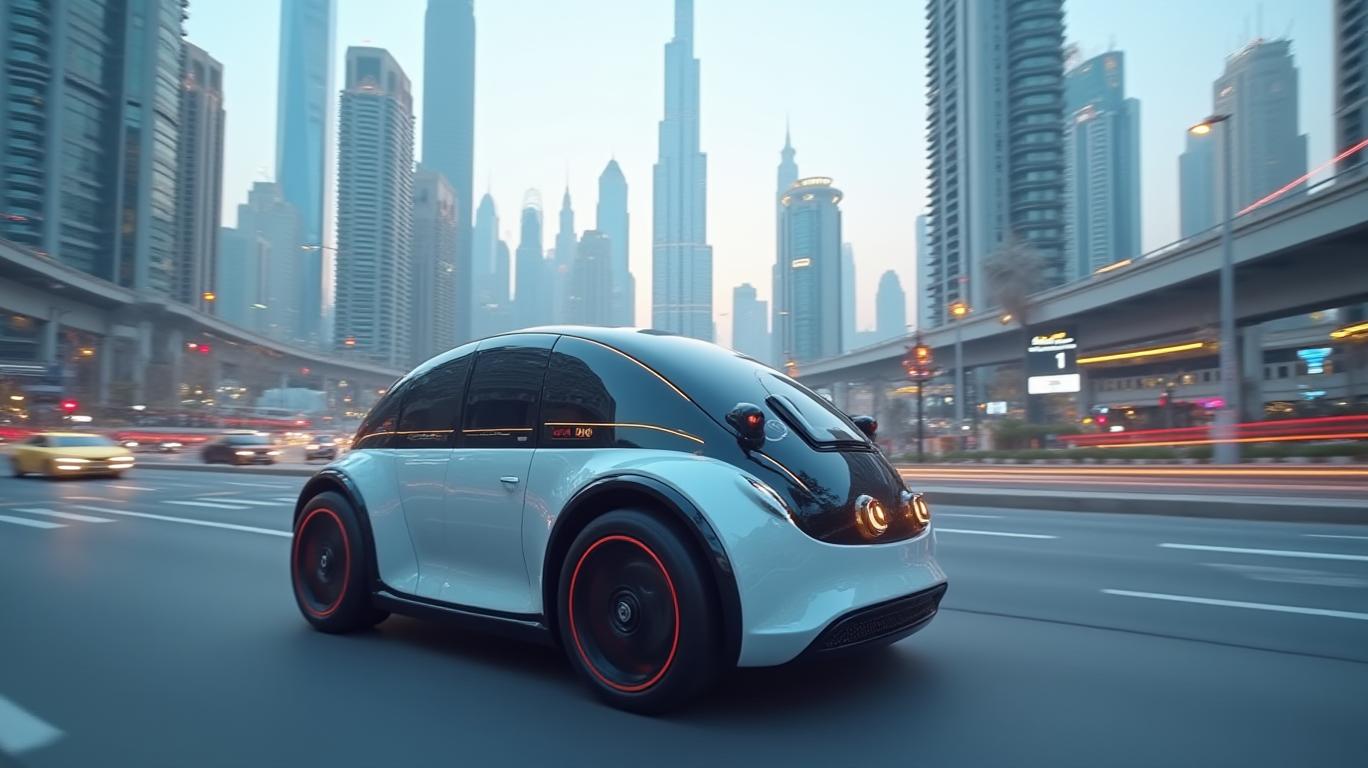Pony.ai's UAE Robotaxi Launch: A Quantum Leap Toward Autonomous Supremacy
The autonomous vehicle revolution is no longer a distant vision—it's here. And Pony.ai, a Chinese tech titan, is positioning itself as the catalyst to dominate this $1.5 trillion market. With its recent UAE robotaxi launch, cost-efficient technology, and strategic alliances, Pony.ai is poised to capture first-mover advantage in one of the world's fastest-growing autonomous mobility markets. Investors who act now could capitalize on a company at an inflection point: transitioning from pilot programs to full-scale commercialization.
Technological Differentiation: A Modular Platform for Global Dominance
Pony.ai's seventh-generation autonomous driving kit (ADK) is a masterclass in engineering elegance. By slashing bill-of-materials (BOM) costs by 70% compared to its predecessor, the ADK achieves automotive-grade reliability while eliminating excess complexity. This cost efficiency stems from two breakthroughs: an 80% reduction in autonomous driving computation (ADC) costs and a 68% cut in solid-state LiDAR expenses. The result? A modular, adaptable system that seamlessly integrates with Toyota's bZ4X Robotaxi, BAIC's ARCFOX Alpha T5, and GAC's Aion V—vehicles already slated for mass production starting mid-2025.

This modular design isn't just about cost—it's about scalability. The ADK works across Robotaxis, trucks, and even delivery vehicles, creating a universal platform that can dominate diverse markets. Competitors like Waymo and Cruise, tied to single automakers or vehicle types, lack this flexibility. Pony.ai's partnerships with Toyota, BAIC, and GAC—three of Asia's largest automakers—further cement its edge, ensuring it can deploy fleets at scale without reinventing the wheel.
Cost Efficiency: The Path to Profitability
Autonomous vehicle adoption hinges on affordability. Pony.ai's 70%
reduction isn't just a headline—it's a game-changer. At a time when rivals struggle with high per-vehicle costs, Pony.ai's ADK enables a price point that could undercut competitors by thousands of dollars. This margin advantage isn't merely about hardware; it's about software. The company's AI-driven decision-making has reduced remote assistance costs by 30% and slashed insurance expenses by 20% through near-flawless safety records.
These savings fuel a compounding network effect. As Pony.ai's fleet grows—from 300 robotaxis in China today to 1,000 by year-end / thousands globally by 2027—its AI learns from real-world data, improving safety and efficiency further. This virtuous cycle lowers costs even more, creating a moat against entrants.
Strategic Market Expansion: Dubai as the Springboard
Nowhere is Pony.ai's ambition clearer than in its UAE launch. Partnering with Dubai's Roads and Transport Authority (RTA), the company is embedding itself into the emirate's 2030 Autonomous Transport Master Plan, which aims to make 25% of journeys autonomous by 2030. The phased rollout—starting with trials in 2025 and moving to fully driverless operations by 2026—aligns perfectly with Dubai's vision of becoming a global smart city hub.
Dubai's regulatory agility is a tailwind. Unlike the U.S. or Europe, the emirate moves swiftly to grant permits, enabling Pony.ai to deploy fleets faster. This “testing ground” will refine its technology for export to markets like the EU, China, and the U.S., where Pony.ai already holds operational permits. The result? A multi-market network effect, where data from Dubai's high-speed highways and Shanghai's gridlocked streets collectively improve global reliability.
Financial Catalysts: A Stock at an Inflection Point
The numbers are staggering. Pony.ai's Q1 2025 revenue surged 218% year-over-year, with fare-charging revenue soaring 800% as customers embrace autonomous services. Its $6.97 billion market cap and an Altman Z-Score of 43.56 (signifying robust financial health) underscore its readiness for growth. The Dubai partnership alone sent its stock soaring 12.64% to $19.61—a preview of what's to come. However, historical performance analysis reveals that following positive earnings announcements, the stock has underperformed, with an average return of -44.31% over the subsequent 20 trading days from 2020 to 2025, accompanied by a maximum drawdown of -64.81%. This underscores the volatility inherent in the sector and highlights the UAE expansion's unique role as a catalyst for sustained growth.
Analysts now see Pony.ai as a “buy now” opportunity, with its stock undervalued relative to peers like Tesla or NIO. As autonomous mobility adoption accelerates—driven by aging populations, urban congestion, and ESG mandates—Pony.ai's cost-effective, globally deployable platform could become the industry's backbone.
Risks and the Bottom Line
Skeptics will cite regulatory hurdles and public trust. Yet Dubai's bold vision and Pony.ai's proven safety record (zero at-fault incidents in 2024) suggest these risks are manageable. Meanwhile, the rewards are immense: a $10 billion autonomous mobility market in Dubai by 2030, plus global opportunities worth tens of billions more.
For investors, Pony.ai's UAE launch is the opening act of a grand story. With technology that scales, costs that undercut rivals, and a first-mover advantage in a high-growth region, the stock is primed to deliver outsized returns. The question isn't whether autonomous mobility will win—it's who will lead it. Pony.ai is writing that answer in bold.
The time to act is now.

Comments
No comments yet